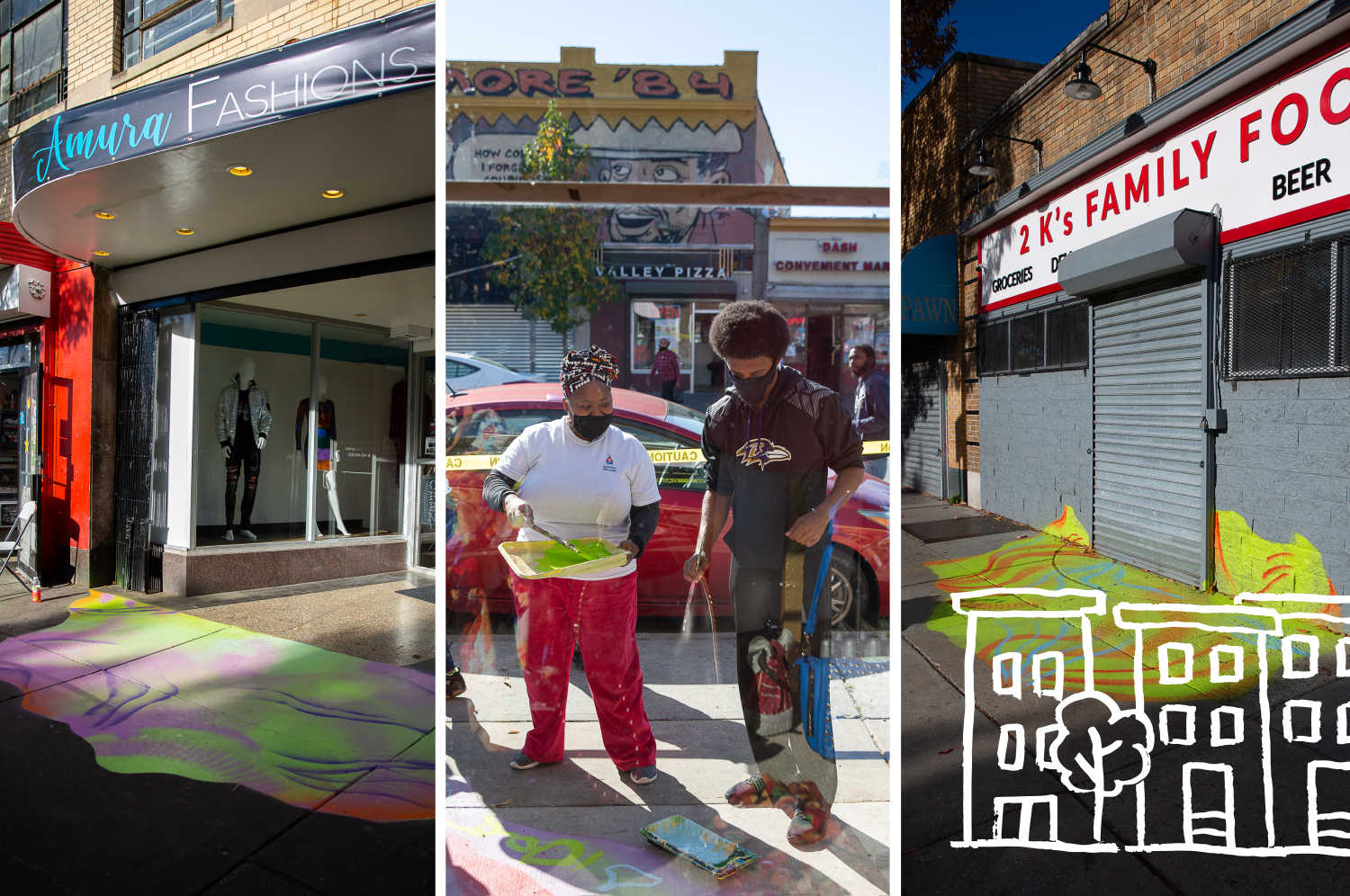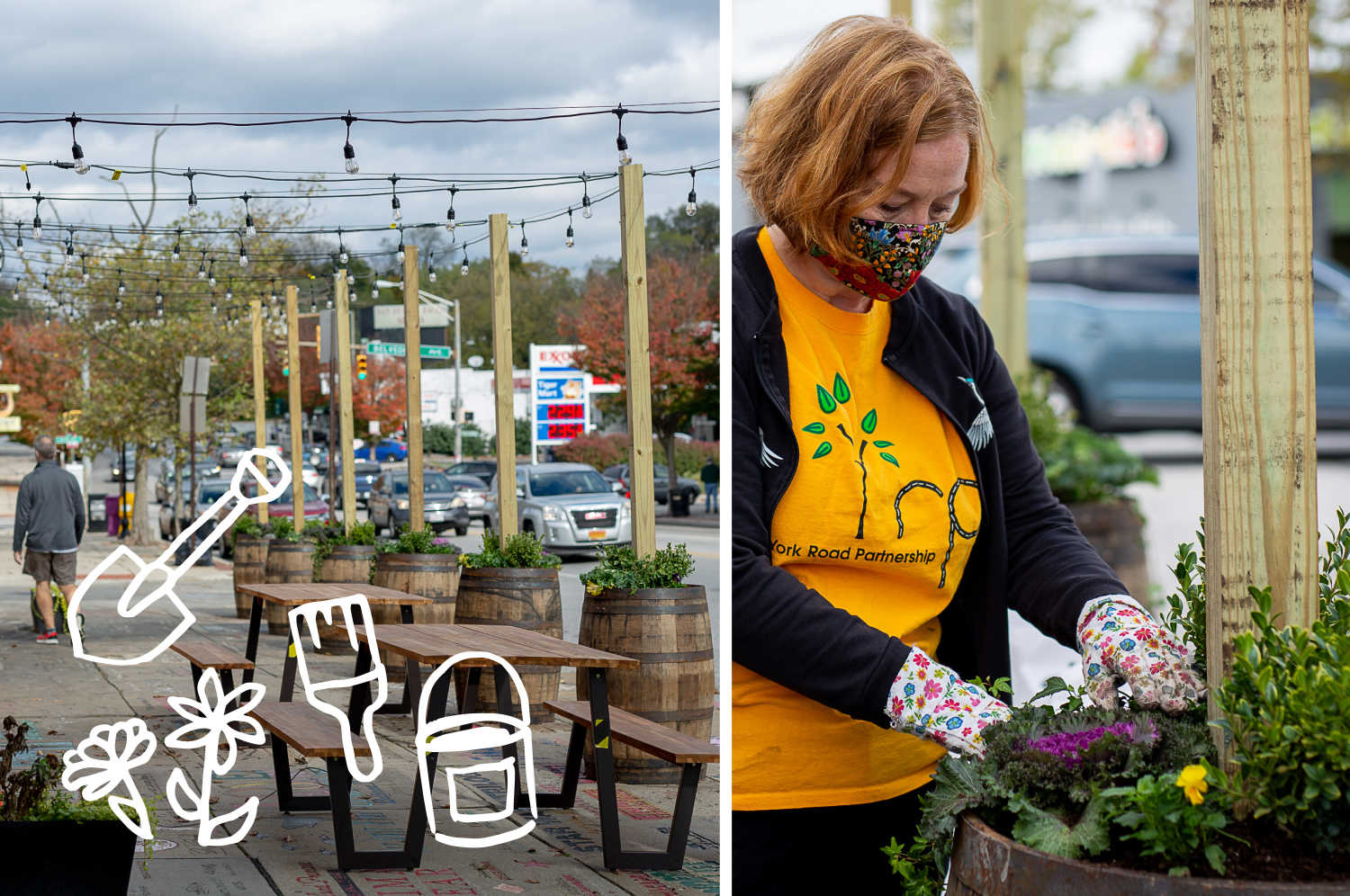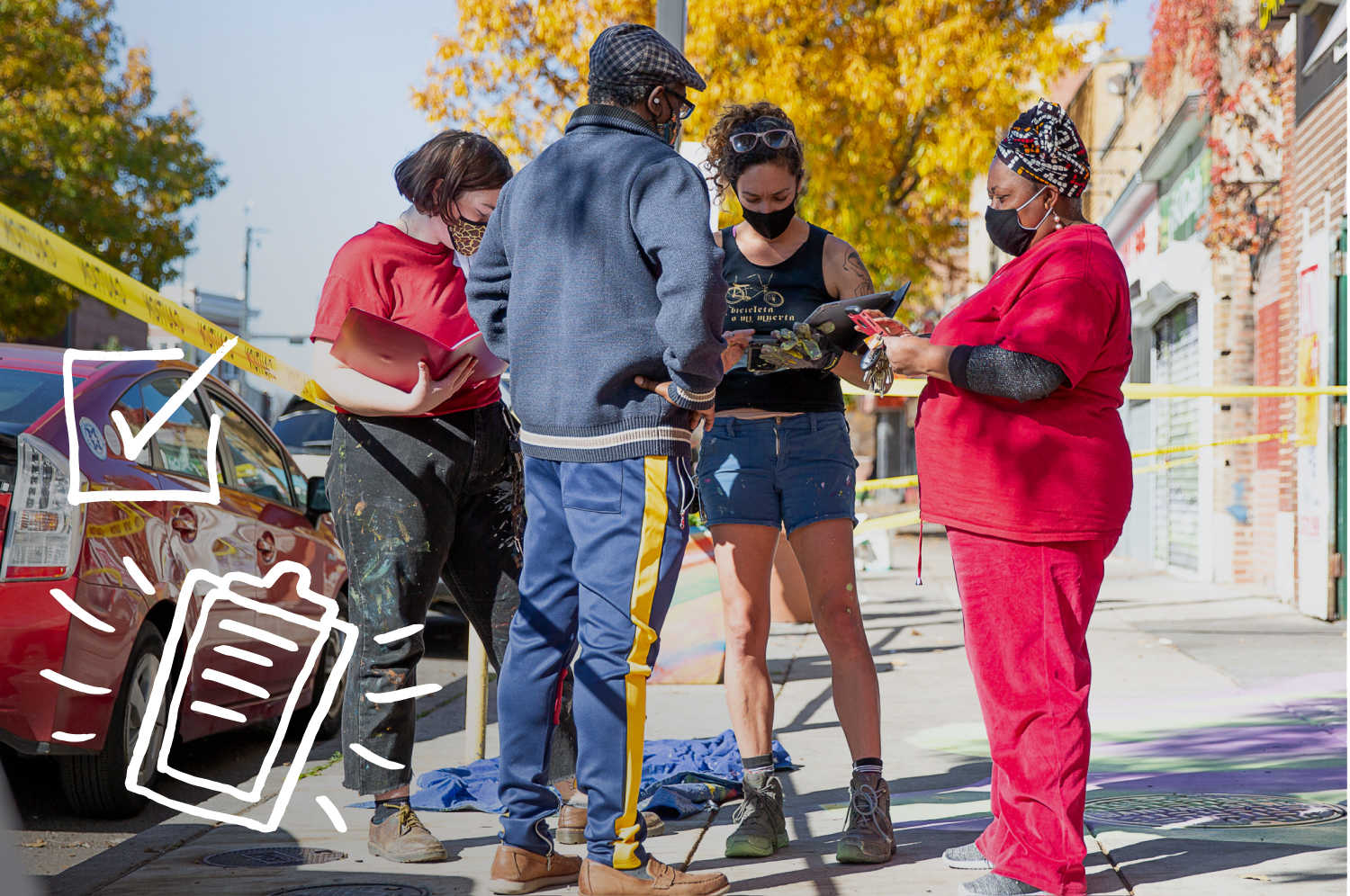Stories
March 11, 2022Design for Distancing Practical Recommendations

1. To encourage more small business activity in public spaces, agencies will need to lead the way with coordinated, low-cost, and transparent approval processes.
The urgency of the public health crisis is a key factor in enabling community partners to work through government systems efficiently. Systems need to be improved so that it’s possible to experiment with public space when there is no state of emergency.

2. To support the broad use of our public spaces, public investment should continue to focus on site implementations that support multiple businesses.
When a public space intervention is executed in support of just a single business, it becomes an extension of that business and effectively privatizes a public space. City funding must be leveraged to support a much broader variety of stakeholders and spaces should be welcoming to all users, including those that are not engaging in commercial activities.

3. Spaces closely associated with individual businesses can rely on them for care and maintenance. Those that serve corridors or neighborhoods will likely need maintenance by the City or a business association to get the care it needs.

4. Prioritize sites that are aligned with existing or planned programming and events.
Supporting diverse partners in efforts to create programs for or use
spaces will create more inclusivity and lead to high utilization. Events also have the potential to increase economic activity in the spaces and around the district.

5. Build site evaluation into the program design.
Building site evaluation into the program design will assure that spaces and their users thrive by documenting who is using the space, how they are using it, and when it’s being used. This tells us what its strengths and weaknesses are and allows us to adapt effectively.

6. Post-COVID-19, permitting processes should recognize regular business practices in order to drive private/public investment in our public spaces like sidewalks, parking areas, and vacant land.
The Design for Distancing project was an ambitious program that helped to build the capacity of the many stakeholders, designers, program partners, and city staffers who worked on site implementation. The city is well-positioned to build upon the first iteration of this program to continue to invest in placemaking.
According to the thesis by Carla Hinson, Department of Graduate Built Environment Studies at Morgan State University, there were 6 recommendations to continue this success and build momentum for future projects.
The process of getting through the city’s red tape is typically slower and much more complex, but the Design for Distancing program was able to sidestep this due to the Covid-19 state of emergency. For a future iteration of the program to be successful, the program must establish clear approval processes that have buy-in from city staff and that community stakeholders are able to navigate efficiently.
By partnering with merchant associations and Main Street districts, the city is able to support placemaking that benefits communities as a whole, not just individual businesses.
A future program could support communities by providing template Memorandums of Understanding that could be used to establish a regular maintenance strategy. Program administrators should provide additional support to districts who don’t have a capable small business as these under-resourced communities shouldn’t automatically be excluded from public space interventions.
Community sponsors should first offer pop-up vending opportunities to locally owned businesses and then startup entrepreneurs interested in finding permanent space in the district.
While this public life study only focused on three sites that were suitable for evaluation, a commitment to evaluating all site installations would produce more robust information and provide a greater opportunity for learning and improvement. Standardized evaluation instruments would allow us to compare sites across the city, but program evaluations could be carried out in partnership with community volunteers, city and regional planning students at Morgan State University, interns at Baltimore Development Corporation, or another implementing partner.
To read the NDC case study, go here. To understand the project and the locations we have developed a guidebook highlighting the great work done by so many local partners. Learn more about this recommendations in Carla Hinson’s thesis on the resources page.